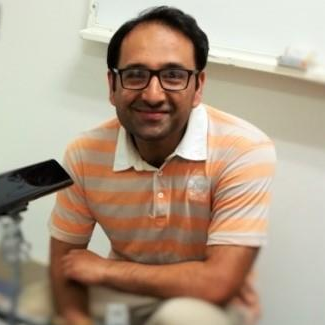Object-Based Classification Using Multi-Source Satellite Image Time Series
A special issue of Remote Sensing (ISSN 2072-4292). This special issue belongs to the section "Remote Sensing Image Processing".
Deadline for manuscript submissions: closed (30 November 2021) | Viewed by 2663
Special Issue Editors
Interests: image analysis; multimodal image fusion; computer vision; deep learning
Special Issues, Collections and Topics in MDPI journals
Interests: deep learning; pattern recognition; image processing; object recognition; classification; regression
Special Issues, Collections and Topics in MDPI journals
Interests: computer vision; deep neural networks; image processing; machine learning, image classification; object detection
Special Issue Information
Dear Colleagues,
As remote sensing has witnessed important technological progress with high-definition images, another kind of progress is taking place in the field of satellites, which are able to acquire image time series at high frequency (daily and even multiple times per day). These satellite image time series, also known as SITS, are an important source of information for object classification and scene (e.g., geographic area) understanding. A possible but naive usage of these images would consist in selecting two images from the series and studying their differences and the evolutions they reveal. However, changes in a scene might spread over a long period or even occur in a cycle. Consequently, the number of possible combinations is intractable and cannot be reduced to the analysis of two images. Multisource images have shown promising results and robustness in the recent literature.
In view of the above, ever-expanding choices of multisource satellite images can be considered in object-based classification using image time series. Since multisource satellite images can bring complementary information around the same scene, object-based classification using multisource satellite image time series can achieve increased robustness and accuracy compared with those techniques based on a single or two satellite images. By integrating images from multiple remote sensing sources and including spatial, semantic, and temporal information, object-based classification using multisource image time series becomes a promising research subject. However, this is a challenging task because of variations in spatial information, inconsistency in temporal dimension, abd differences in imaging mechanisms. Therefore, the inclusion of a Special Issue in the journal Remote Sensing is timely to promote innovation and improvement of object-based classification using multisource satellite image time series data. In this Special Issue, we aim to cover the latest advances and trends in the field of multisource satellite image time series.
Dr. Abdul Bais
Dr. Syed Afaq Ali Shah
Dr. Senjian An
Guest Editors
Manuscript Submission Information
Manuscripts should be submitted online at www.mdpi.com by registering and logging in to this website. Once you are registered, click here to go to the submission form. Manuscripts can be submitted until the deadline. All submissions that pass pre-check are peer-reviewed. Accepted papers will be published continuously in the journal (as soon as accepted) and will be listed together on the special issue website. Research articles, review articles as well as short communications are invited. For planned papers, a title and short abstract (about 100 words) can be sent to the Editorial Office for announcement on this website.
Submitted manuscripts should not have been published previously, nor be under consideration for publication elsewhere (except conference proceedings papers). All manuscripts are thoroughly refereed through a single-blind peer-review process. A guide for authors and other relevant information for submission of manuscripts is available on the Instructions for Authors page. Remote Sensing is an international peer-reviewed open access semimonthly journal published by MDPI.
Please visit the Instructions for Authors page before submitting a manuscript. The Article Processing Charge (APC) for publication in this open access journal is 2700 CHF (Swiss Francs). Submitted papers should be well formatted and use good English. Authors may use MDPI's English editing service prior to publication or during author revisions.
Keywords
- time series analysis
- machine learning
- deep learning
- image understanding
- object recognition
- object classification
- satellite imagery







